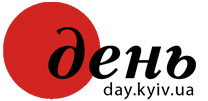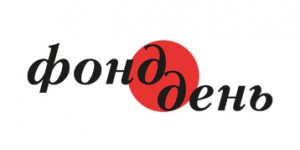(Conclusion. For part 1, see The Day, No. 29)
“I am sure you will find new materials on Shevchenko,” Mr. Derehus said. “God willing, there may be an unknown portrait of the poet in some private collections. For you have unearthed a unique portrait of Gogol that Venetsianov painted in 1834! There are only two portraits like this left in the world. Only the genius’s closest friends saw it.”
Derehus opened a folder filled with his drawings.
“Through you I will present my illustrations to the immortal novella Taras Bulba to the museum dedicated to Nikolai Gogol, who was Shevchenko’s literary teacher and our compatriot of genius,” he said.
I sincerely thanked the master for his generous gift.
For 22 long years I would be searching private collections for the unknown portrait of Shevchenko, as People’s Artist Mykhailo Derehus had instructed me.
On May 22 of this year, the 144th anniversary of the reinterment of Shevchenko’s remains in Ukraine, I visited Kim H. Skalatsky, the curator of the Poltava Art Museum for 25 years, who has superb books on the world’s greatest painters. I asked his permission to look through an album of Briullov paintings.
Skalatsky was very busy from the early morning, so I decided not to bother him and just go.
I recalled Derehus’s words, “Search! Never give up! If you look hard, you will find it. “
Late that night I opened the album of Briullov’s reproductions. His contemporaries used to say he was a great man of their time, the best artist, and an all-embracing painter.
Turning the pages, I suddenly froze in surprise. An 18.3 x 24.3 pencil drawing, No. 67, which experts titled “Portrait of a Russian Artist Sketching in an Album,” featured my dear 28-year-old Taras Shevchenko. According to the annotation, this portrait was part of Briullov’s 1824-1843 sketchbook now in Moscow’s Tretyakov Gallery.
The picture is a fresh and lively portrait of Ukraine’s young prophet in the happiest period of his life — seven years of studies at Briullov’s St. Petersburg studio. It clearly reveals the poet’s nature, conveys the plasticity of a living person, and accurately outlines the features of a very beautiful face that radiates a wonderful kindness.
This work seemed to be a mirror image. The drawing was identical to the self-portrait that Shevchenko executed in November 1843 at Prince Mykola H. Repnin’s estate in Yahotyn, Poltava province. Both portraits show the same characteristic shape of the poet’s head, a high bumpy forehead, a peculiar facial angle and curve of the eyebrows, the same shapely, full lips, the length and shape of the nose, deep-set eyes, and graceful bone structure of his hands.
Briullov drew a full-length portrait of Ukraine’s titan when the latter was at the peak of his creative power and inspiration. In the portrait by his teacher, Shevchenko is looking intently and sternly into the distance, pausing while drawing a street scene in his sketchbook. The self-taught rebel was not attracted to lifeless, dry, and rigid academic patterns. What pulled at the great artist’s heartstrings was the whirlwind of people’s everyday life. Apparently, something drew the poet’s attention when he was going to visit somebody or to take a stroll in the woods. He took out his sketchbook and began to work. It was this moment that his great mentor depicted.
The young genius is standing before us as though drenched by the sun. He is dressed in the fashion of the times: a top hat and a long overcoat with a velvet collar and upturned sleeves. We see the same clothes in his 1843 self-portrait. The same unruly shock of hair has crept out from under the top hat. This leads me to think that Briullov drew this portrait of Shevchenko in early May 1843.
According to the prominent Shevchenko researcher Petro V. Zhur, on May 11 that year the poet purchased his passage to Ukraine and soon left St. Petersburg for his homeland.
During the nine years of exile in Novopetrovsky Fort’s dark and stinking soldiers’ barracks, Shevchenko recreated the charming figure of his teacher in the novella The Artist. Like sunshine, fond memories of him pervade the pages of his reminiscences about the great Briullov.
Following the path of fiction but still relying on real events that took place during the seven years of his life as a free individual under the guidance of his great mentor, Shevchenko was shaping a new artistic world by revising, shifting, and remaking the true things of life.
“Very few people have ever shared the sweet fate that befell me. Had you not intervened, the blind goddess would have flown past me, but you made her descend on a poor forlorn guttersnipe.”
“Few nobles and courtiers have been rewarded with the great happiness that I, an unknown beggar, am enjoying!”
The genius concludes The Artist with these words: “The unforgettable Karl the Great was already dying in Rome.” Briullov’s creative power was undermined by having to paint lustrous portraits and historical canvases glorifying the autocracy.
The fact that Shevchenko never severed ties with his great teacher or came into conflict with him is proved by a sketch of Briullov’s profile that the poet drew on March 2, 1840, in a letter to his elder brother Mykyta Shevchenko (1811-1879). Next to it was a profile of Vasily Zhukovsky together with his own humorous self-portrait.
Further proof of his friendship with the great painter was a portrait of Briullov that Shevchenko drew in the 1840s. Its size (15.6 x 11.7) indicates that it was not a commissioned work. Twenty years later, when Shevchenko sent this unfinished pencil portrait to Fedot L. Tkachenko (1819-1885), a Poltava-based friend and former fellow student at the Academy of Arts, he affixed the wrong date — 1835. Documents prove that Briullov was still in Milan at the time and could not possibly have posed for Shevchenko.
Gazing at the portrait of Ukraine’s 28-year-old luminary, it occurred to me that one of the young poet’s most interesting and unexpected pictures had just emerged from the depths of oblivion.
Contrary to all scholarly claims and stubbornly-held hypotheses that the Great Bard quarreled and fell out with his teacher in 1843, this work by Briullov shows that the two artists of genius had a strong and enduring friendship.








